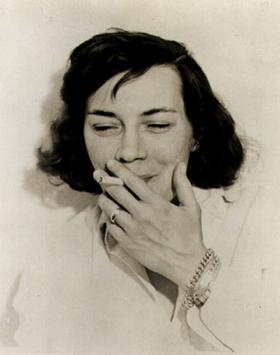Like Mary Renault, and Marguerite Yourcenar, Patricia Highsmith, who was born in Fort Worth in 1921 and died in Switzerland (Locarno) in 1995, is a lesbian writer who created male characters (gay and straight) that I find completely credible. Highsmith’s were not set back in history, as Renault’s and Yourcenar’s were.

Except for the lesbian novel, The Price of Salt, (1952, recently adapted to the screen as “Carol”), which she published under the pen-name of Claire Morgan, Highsmith’s books have male protagonists and mostly male characters (something of an exception is Colette in the 1964 The Two Faces of January and the sinister Renata in small g). I am puzzled that her admirer Graham Greene proclaimed the 1969 The Tremor of Forgery her best. (For me, the first two Ripley novels are better, along with Strangers on a Train and The Two Faces of January, all adapted into interesting movies.

Tremor is set in a Tunisian coastal town, during and after the Six-Day War and the Vietnam, focusing on three foreigners in residence beyond tourist visits, and living in Arab neighborhoods. Howard Ingham is a ist who has agreed to cowrite a screenplay there and having a thousand-dollar advance. A gay Danish painter (who has no sexual liaisons over the course of the book), Anders Jensen, is upset that his dog Hasso, who has been mistreated by neighbors disappears. Then there is the permanent resident, Francis J. Adams, whom Howard dubs “OWL” an acronym of “our way of life,” that is the American, which Adams extol in weekly broadcasts purportedly beamed in the Soviet Union. OWL presses Howard to admit that he probably killed an Arab intruder, throwing his typewriter at the man’s head. Someone or someones dragged the corpse (if in fact the widely despised thief was dead) away and cleaned up the dead.
When Howard’s fiancée, Ina, arrives for a visit, OWL shares his belief that Howard killed the Arab with her, much to Howard’s annoyance. (Jensen does not think it of any importance if the thief was killed or who he was.)
The mnvel drags through daily expat life, as Howard writes a (The Tremor of Forgery, about an embezzler), Jensen paints, and OWL broadcasts Americanist propaganda. Ina plays a rather large part for a woman in a Highsmith novel (hardly a “thriller”) and is also a credible character (as in the gay male one, Jensen).
There are some surprise endings, both straining plausibility, but providing closure. The backdrop of a Muslim country at the time of Israel’s triumph in the Six-Day War is plausible (also during the Cold War and the American war on Vietnam), though the local characters are minor in a book focused on expatriates. Greene said that the novel was about apprehension, though the apprehension is less intense than in some other Highsmith novels (a dozen of which I have not read).
Also see my review of Highsmith’s last novel, small g.
©2019, Stephen O. Murray

